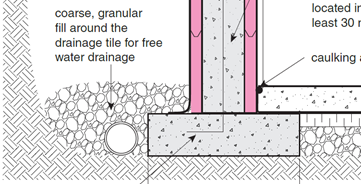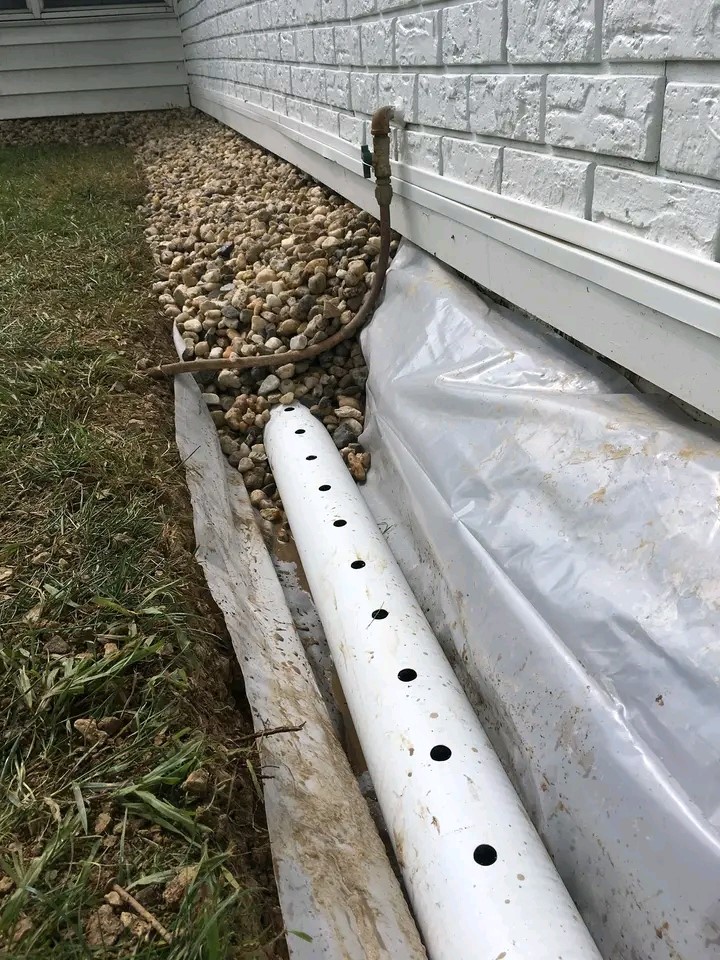From French drains to myriad monikers, this water-wrangling wonder goes by many names (trench drain, weeping tile, drain tile, French ditch, etc.). One common thing about this drain is the misconception about its origin. Despite the name “FRENCH”, it has no relation to France or anything French. The drain was actually named after an American agriculturalist and lawyer, Henry Flagg French (1813-1885). The whole concept of the drains was to move water away from places of accumulation by creating an easy path for it.
What’s a French drain
It is a straightforward system designed to redirect water away from structures or low-lying areas prone to water accumulation. The design typically consists of a perforated pipe wrapped in a geotextile fabric and surrounded by gravel. This arrangement allows water to enter the pipe through the holes made in the pipe while the gravel prevents soil and debris from entering and clogging the system.
Application of French drains in building construction
French drains play a crucial role in safeguarding building foundations against water damage. By diverting water away from the building foundation, it prevents water from pooling around the foundation. When foundation footings are surrounded with water, the chances of water entering the foundation and reacting with reinforcement are high. When this happens, water reacts with reinforcement in the foundation, thereby causing reinforcement to rust and reducing the structural stability of the foundation. To prevent this, French drains are laid alongside the foundation footing to divert or transport water around the foundation. As part of ensuring the structural stability of foundations, they effectively help mitigate the risks of soil erosion and flooding.

Installation of French drains
French drains are subsurface drainage systems consisting of a trench (12″ to 18″ wide and 18″ to 24″ deep) containing a perforated pipe (typically 4″ in diameter) surrounded by washed gravel fill (typically 1″ in size). The trench should be excavated with sufficient slope for proper water movement. Geotextile fabric is laid in the trench to prevent soil from clogging the gravel. Gravel can extend to the surface for aesthetic appeal or be covered with a thin layer of topsoil for a more discrete look with grass growth. Rainwater from various sources, such as rooftops and impermeable surfaces, can be directed into the drainage line. In low-lying areas, installing a grate (covering for an opening to prevent large objects from falling through) allows rapid water infiltration and easy maintenance access. Water can be dispersed to various destinations, including water features, low-lying areas, or drainage ditches.

Mistakes that compromise the effectiveness of the drain
- Improper slope
Water won’t flow properly in the drains if there isn’t enough slope to cause movement of water through a direction.
- Inadequate gravel bed
Clogging of the perforated holes might occur when there is insufficient gravel around the drain. The gravel is meant to prevent soil from reaching and covering the holes in the drain, so when there isn’t enough around the drain, clogging occurs and there is a reduction of drainage space.
- Neglecting filter fabric
Though it’s the function of the gravel to keep out soil from clogging the drain, that alone isn’t capable of largely keeping the soil out. Filter fabric in combination with the gravel keeps the soil out and prevents it from clogging the pipe, so neglecting it causes a high chance of clogging the pipes and thereby, failure of the French drain
- Improper pipe installation
Poor installation or orientation of the pipes can hinder the flow of water in them. Installation done with the perforated hole facing upwards is a common mistake that compromises the effectiveness of the drain. When holes are made to face upwards, the water has to fill the area and cover the drains before the drains can carry part of the water away. This essentially prevents water from entering the pipe effectively, instead of water seeping into the pipes through the holes, it remains on the surface or saturates the surrounding soil.

